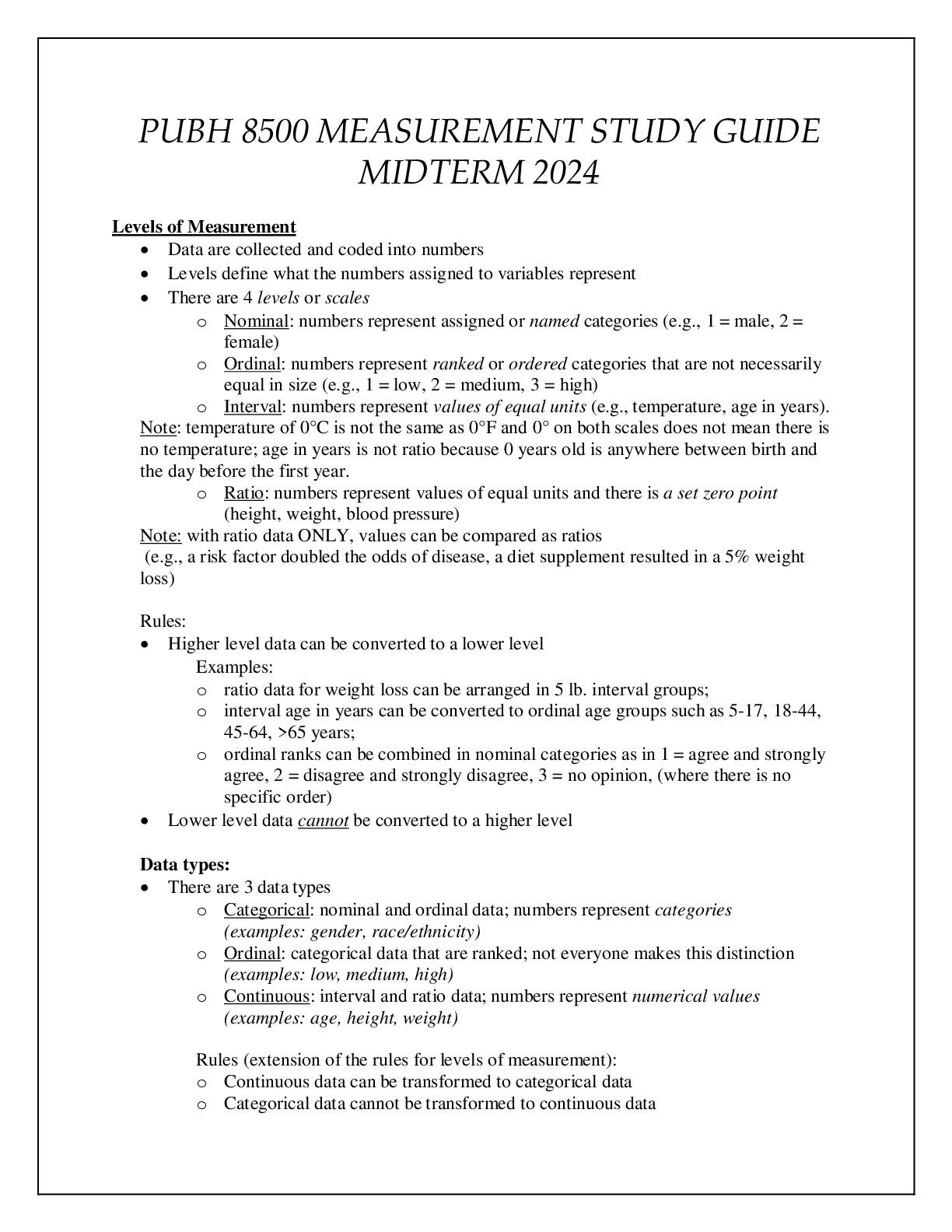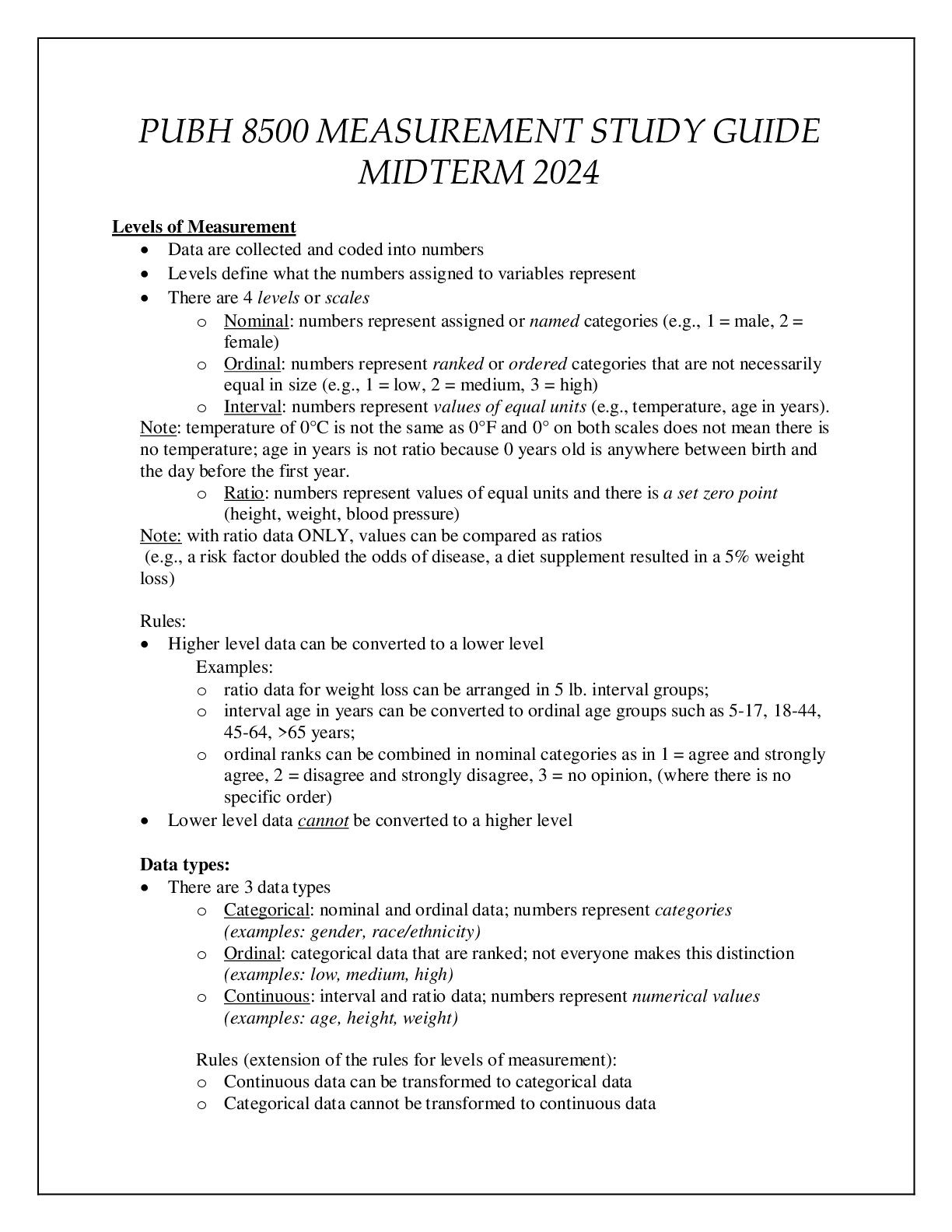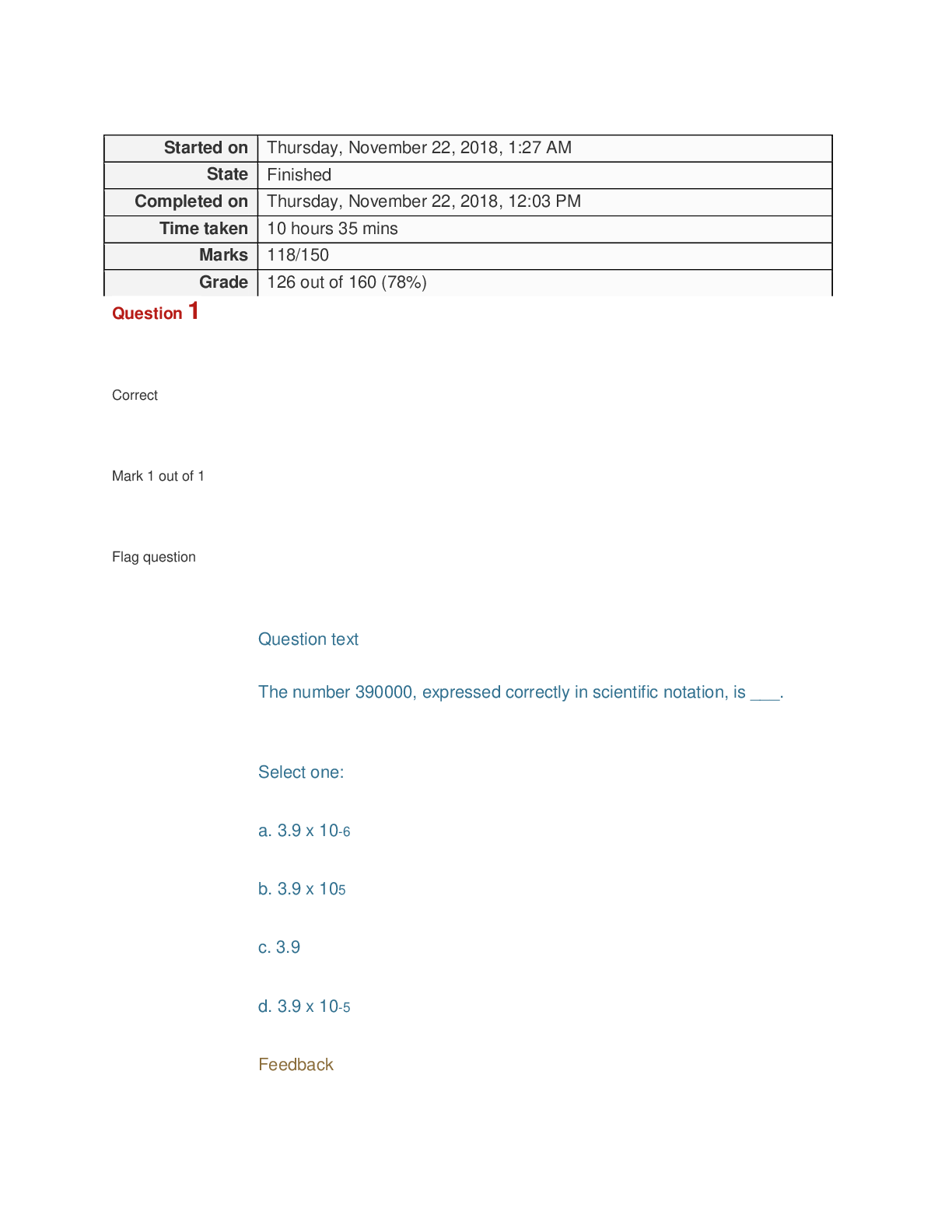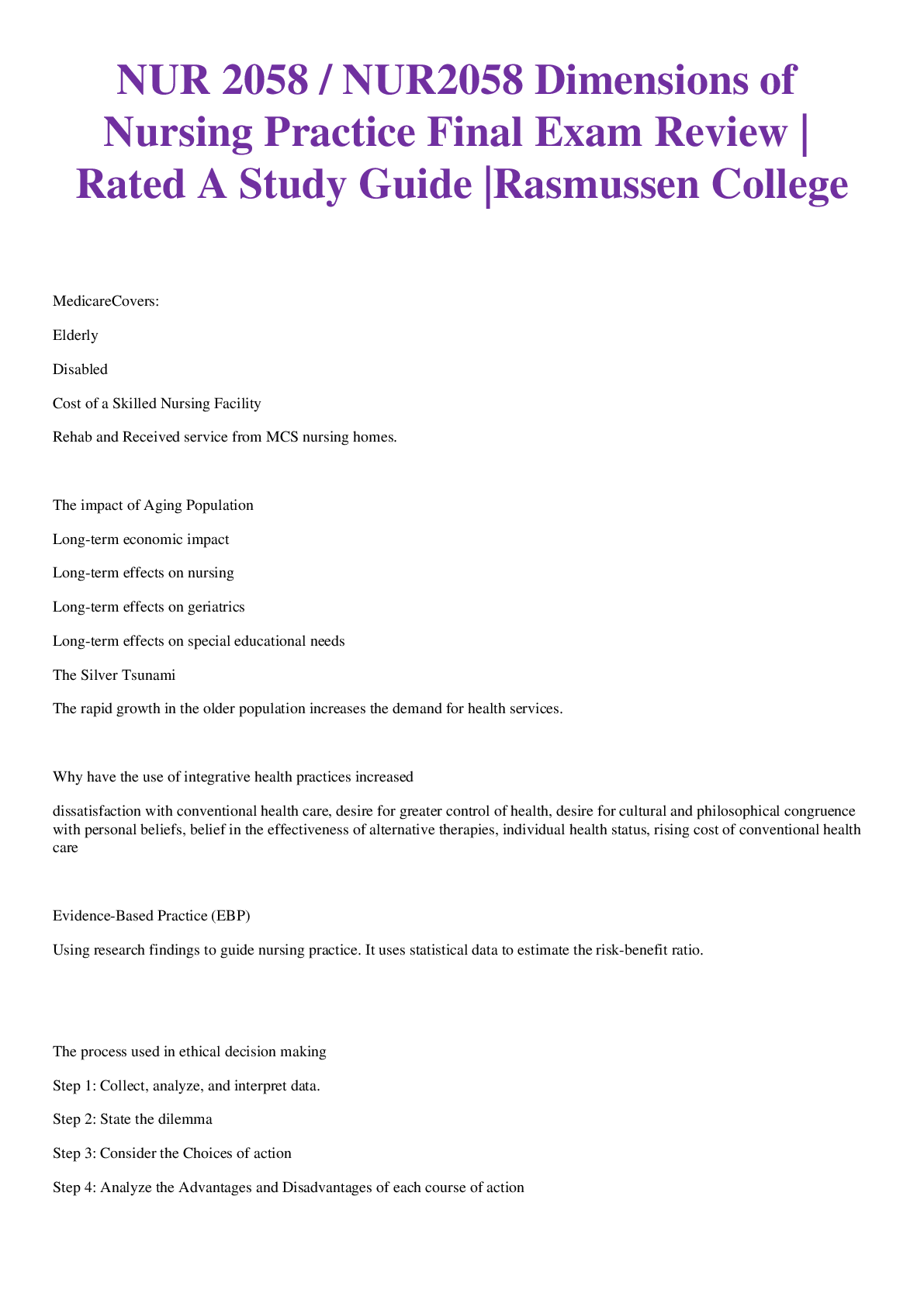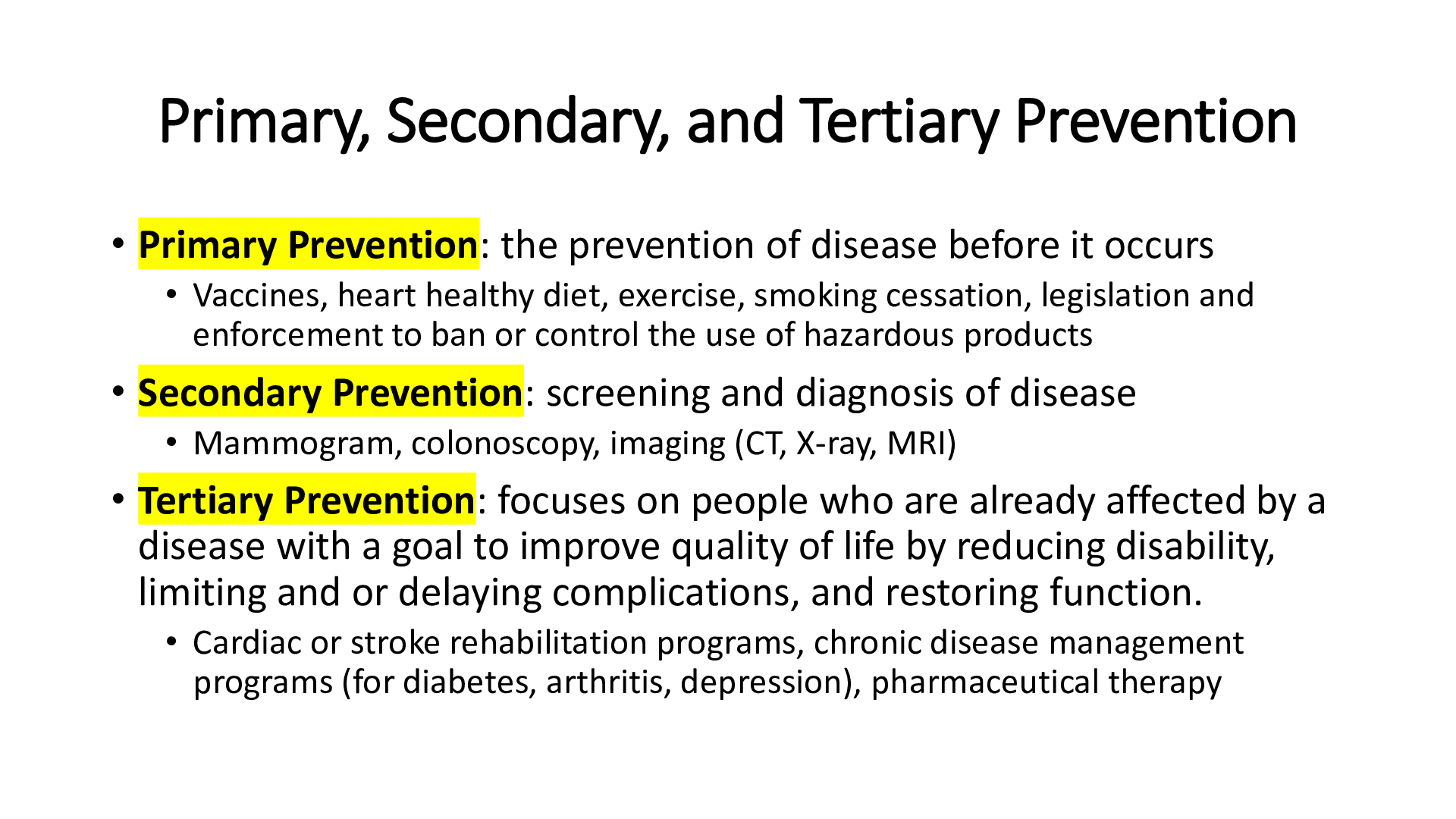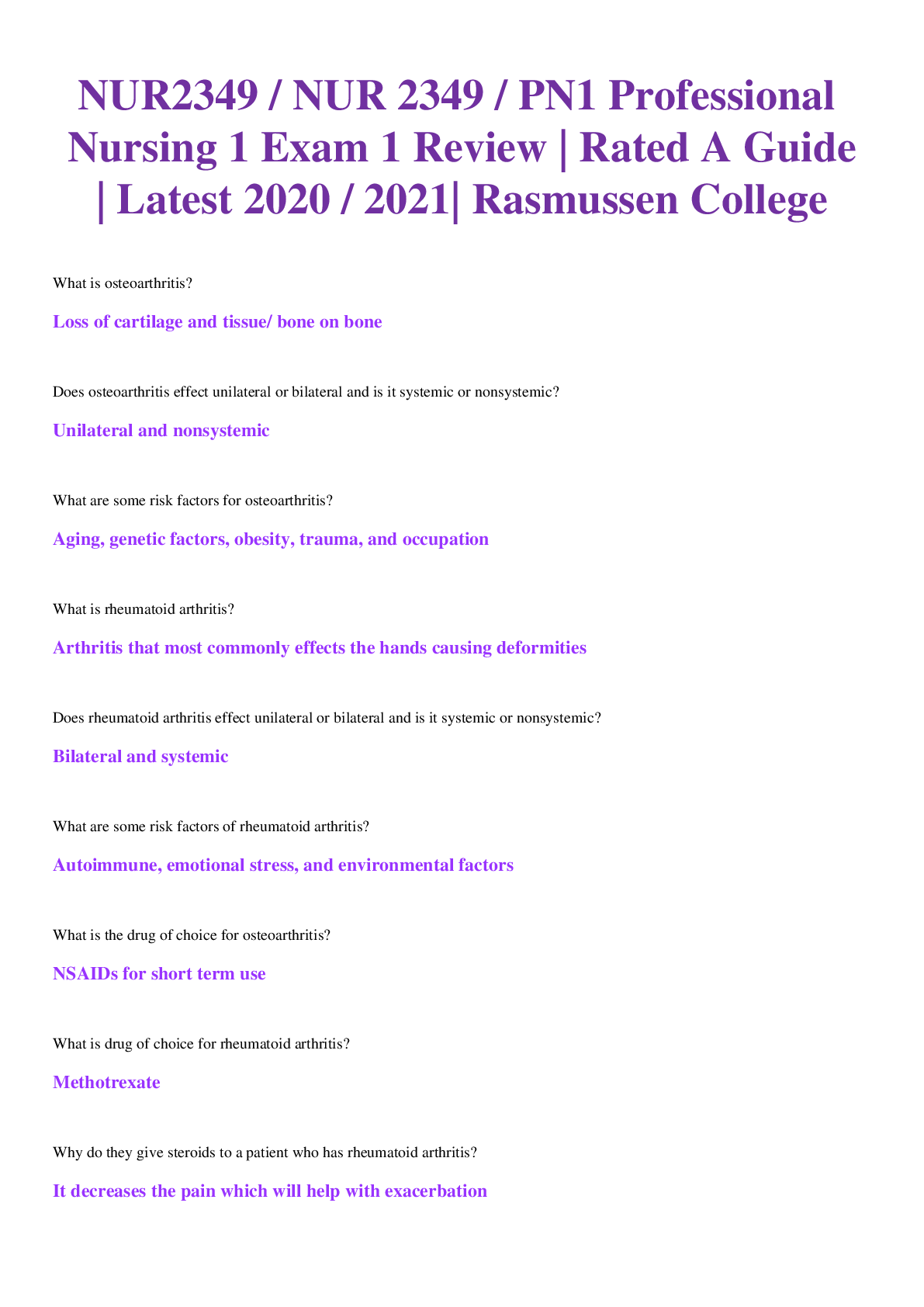Business > EXAM REVIEW > BUS303 Pendergast Study Guide Midterm 1/ Midterm 1 Slide Study Questions and Answers. (All)
BUS303 Pendergast Study Guide Midterm 1/ Midterm 1 Slide Study Questions and Answers.
Document Content and Description Below
Midterm 1 Slide Study Questions BUS303 Pendergast Study Guide Midterm 1 Nature Of International Business • What contributes to the high degree of complexity of International Business? • What ... is a global “regime?” • How significant is global trade as a percentage of global GDP? • Global GDP consists mostly of services (63%) rather than manufactures (31%) or agriculture (6%). Is the composition global trade mostly services or manufactures? • Does world trade grow faster or slower than world GDP? • What are the three components of the Transnationality Index (TNI) used to measure the globalization of corporations? • What percentage of global GDP is accounted for by the activities of transnational corporations (TNCs)? • Why is virtually impossible for a company to simply focus on domestic business? • What word describes the exploitation of differences among countries as a principal source of International Business opportunity? • What specific kinds of differences among countries can provide international business opportunities? • What are three key challenges for companies that engage in international business? • Give an example of a company managing the dilemma of efficiency versus responsiveness. • What are the sources of the high level of risk characteristic of international business? • What special capabilities & resources are necessary for company readiness for international business? • What four empirical phenomena (measurable components) does the term “globalization” refer to? • What previous “global” eras occurred before WWII? ◦ Roman empire ◦ Sixteenth century ◦ Post-Napoleanic Wars (1815) to WWI ◦ Post-WWII • What processes have been the driving forces of globalization? ▪ ) • What changes in specific technologies have driven the pace and extent of contemporary globalization. Identify the specific nature of their contribution. ◦ • AT Kearny’s “index of globalization” includes four components that measure the globalization of countries. What are the four components? • What significant change in the corporate value chain characterizes globalization in the current era? • Which of the following countries or regions is most “open” economically, measured by trade as a percentage of GDP: US, UK, Asia-Pacific region? • Is most trade regional (among countries within a region) or global (between regions)? • Which S&P 500 industry sector has the largest percentage of foreign sales? • Which countries/regions are part of the “Triad” that has dominated international business? • Name several significant shifts to the global economic landscape in recent years. ◦ • What percentage of global GDP did “emerging economies” reach in 2005? ◦ 50% • Name several criticisms that have been made regarding globalization’s negative effects. • Has the equality or inequality of income between countries increased during the current era of globalization? • In developed countries during the past 10 years, have corporate profits or labor compensation increase more as a percentage of national income? • By 2007, how many of the world’s 10 biggest companies (by market capitalization) were American? • What percentage of jobs in the US are in the manufacturing sector? • Have the jobs increased or decreased in recent years? • In recent years, have US-based multinational corporations increased their employment most in the US or overseas? • Through what processes can the foreign investments of multinational companies have a positive “spillover” effect of technology and management practices of local firms. • Give an example how foreign business activities of multinational companies can “crowd out” local firms What four characteristics must be included in the description/definition of any IB regime? What major types of actors have an impact on international business? Give an example of each one. What organization is a supranational entity? As a cartel, what is OPEC’s major objective and how does it achieve it? What is the highest level of international economic integration? What are the other levels? Give an example of each. What is the average Transnationality Index (TI) of the 100 largest non-financial transnational corporations (TNCs)? What competitive advantages do multinational corporations have, compared with primarily domestic corporations? What are frequent differences between multinational corporations (MNCs) and national governments on issues regarding investments by MNCs: What factors contribute to the relative bargaining power of multinational corporations and national governments during negotiations over MNC investments? What positive and negative local impacts can multinational corporations (MNCs) have on countries where they invest? What are mechanisms/processes whereby “spillovers” of technology and management practices may occur by multinational corporations (MNCs) to local companies? What characteristics of local firms affect the extent to which “spillover effects” of technology and management practices result from multinational corporation (MNC) investments? What specific steps can multinational corporations take to maximize their “spillover” effect of technology & management practices on local economies? On average, are large companies or small companies more international in their business activities? When small companies engage in international business, is it mainly through exporting or FDI (foreign direct investment)? What kinds of company decisions regarding international business activities are affected by the nature of specific foreign business environments? What do the four letters in the “PEST” and “CAGE” frameworks stand for? What is the key difference between the PEST and CAGE frameworks for the analysis of foreign business environments? In the CAGE framework, what factor determines which of the four dimensions of the framework is most relevant to a specific company? Name a specific industry that would be significantly affected by the existence between two countries of a high degree of: Name several aspects of the political-legal environment of countries that fall within the “P” of the PEST framework. What key concept in Ghemawat’s CAGE framework distinguishes it from PEST? Identify two specific aspects of “distance” between India and Europe that make European Union (EU) countries difficult to penetrate for the Indian outsourcing industry that has been so successful in penetrating the US. Which country has the largest State-owned enterprise sector, relative to its GDP? What are the three most common legal systems around the world? Give one example how each of the following aspects of the physical environment of a country might affect business. What is the distinctive feature of “transitional economies” compared with market economies, social-market economies, emerging economies, or socialist economies? Companies experience a “liability of foreignness” in competing with domestic firms in foreign markets. Identify three specific such “liabilities.” Which scholar suggests that successful internationalization requires that companies must have “firm-specific advantages” (FSA) to overcome their “liability of foreignness” in international markets? • Firm-specific advantages (FSA) may be assets or capabilities that enable a company to compete despite disadvantages in foreign markets that arise from “liabilities of foreignness.” Identify three FSAs and give a company example for each. Which scholar proposed the “product life cycle” theory of internationalization that suggests a sequence of internationalization stages for a product category? What are the four stages of the international product life-cycle? Identify an example of a product that fits this model. What international business phenomenon does John Dunning’s OLI paradigm explain? What do the letters OLI represent in John Dunning’s model? What does the “Uppsala model” or theory of internationalization explain? CORE is an approach to assessing “companyreadiness for international business.” What factors go into this assessment? What three components of a firm’s Transnationality Index (TNI) measure its degree of globalization. What percentage (%) of total sales are foreign sales by the largest US companies (S&P 500) Which industry category of the S&P500 has the highest foreign percentage of total sales? Are large or small companies most likely to have a high degree of internationalization? When small companies internationalize, is it most likely to be through exports, foreign direct investment, or both? Identify two ways in which governments have played a large role in the growth of business globalization. Give an example of a company going international as a result of “regulatory arbitrage” (searching for favorable regulatory environments)? Despite the “death of (physical) distance” between countries from new technologies, a new distance that impedes trade can be the “width of the border.” Identify three things that can widen borders between countries. What specific technologies have been most instrumental in overcoming “frictions” that formerly limited international business transactions? Identify three specific impacts that technology has had on international business. Developments in a company’s domestic markets may provide an incentive for internationalization. Identify several such developments and give specific company examples. Give an example of a company or industry that has gone international in order to follow its customers. How does the “S-Curve” explain how sales opportunities abroad can attract companies to internationalize their operations? Economies of scale (increasing output) are often cited as a reason to go international. What are four ways in which larger scale brings economic benefits? Name two ways besides economies of scale that companies can achieve economic efficiencies by going international. What two factors determine which industries are primarily local and those that are primarily global industries? What is are the five categories of internationalization drivers that push companies to go international? Identify three examples of specifically strategic motives for a company to expand internationally. What institution is responsible for managing the global trade regime? Who benefits from trade & what are the specific benefits? Is there a positive or negative correlation between a country’s trade (as a percentage of GDP) and its annual GDP growth? What are the specific mechanisms or processes whereby trade brings benefits to consumers, companies and countries? What are four potential economic benefits from increasing the scale of company operations (“economies of scale”)? What does the “experience curve” demonstrate and how does it work? Is a “steep learning/experience curve” good or bad? • Identify four different types of trade barriers. • If trade brings benefits, why are there so many barriers to trade? Name three reasons for trade barriers. • What negative economic impacts do tariffs have? • What two facts must a party demonstrate to substantiate a claim of “dumping?” • Why would companies “dump” products at a loss in a foreign market? • What US body is entitled to make decisions regarding “dumping” and countervailing duties? • What are the economic effects of agricultural subsidies to farmers in the rich world and their consequences on developing countries? As global (multilateral) trade agreements have been reached during the post-WWII period, has the number of regional or bilateral Free Trade Agreements (FTAs) increased or decreased? Is most world trade “global” (between regions) or “regional” (within regions)? • Name three things that contribute to increasing a nation’s exports. • Which country has the highest export percentage of GDP? • World trade is approximately what percent of world GDP? • Which of the following shows the fastest rate of increase since 1982: world trade, world GDP, world foreign direct investment (FDI)? • In 2011, what was the value of world trade (exports of goods and services)? • What two statistical categories compose international trade, and what are their percentages of total trade? • What kind of services are included in the category of international commercial services? • Why has global trade in services increased faster than merchandise trade? ◦ It doesn't have an inventory • Has services internationalization occurred more by trade or by FDI? Why? • What two criteria determine the “trade-ability” of a service? • What are four different international “supply modes” of services? • What is the key concept in the idea of comparative advantage? • What does the Heckscher-Olin (HO) Theory of trade propose? • What is the Leontif Paradox? • What is the Linder Theory of Overlapping Demand? • Trade does not necessarily occur in products for which a country is a low-cost producer. Identify four non-cost factors that support exports of products. • Which trade theory proposed that: Trade occurs between countries with similar income levels & demand structures Countries specialize in and export products for which they have abundant factor endowments (land, labor, capital) The purpose of trade is to generate a surplus and accumulate stocks of monetary assets Two countries can benefit from trade even if one is more efficient in producing every product What are two constituent elements of cross-border capital flows? What measurements are used to report the magnitude of cross-border capital activity? What percentage does FDI represent of total cross-border capital flows? A company doing FDI has a choice between two forms/modes of ownership. What are they, and what considerations determine when either is best? What are the two “establishment modes” for FDI? When is each one best? What are the three “types” of FDI, with regard to the corporate value chain? What are four common motives (goals) that companies seek for FDI? • Why do companies typically internationalize first by exporting instead of FDI? • If a company is seeking markets for its products, why would it do FDI instead of exporting? • Compare FDI and exporting with reference to: ◦ Risk – ◦ Cost – ◦ Commitment – ◦ Potential return – ◦ Timing (which comes first) – • How does John Dunning’s “OLI” (eclectic) theory explain FDI? • The volume of a country’s FDI often goes in cycles. Identify three factors that encourage FDI by a country’s firms. • Which has faster growth: • Is most FDI accumulated stock in developed or developing countries? • Are developed or developing countries attracting an increasing inflow of FDI? • Most FDI flows: • What is the sectoral composition (percentages) of FDI in: ◦ Manufacturing; ◦ Services; ◦ Energy & mining. • Which is greater in value: • What are two different ways for companies to grow? • What is the logic of international acquisitions that leads companies to buy other companies? What benefits to they expect from the acquisitions? When companies make an acquisition of another company, what specific kinds of target assets typically interest them? What acquisition pitfalls explain why KPMG estimated that only 17% of international acquisitions actually add shareholder Value? Identify four potential “hurdles” or obstacles that a company may encounter in making international acquisitions. Which of the following are the pre-deal “hard keys” to acquisition success? • What are three “soft keys” to acquisition success? • What “pros” and “cons” should a company consider in deciding between an acquisition or a greenfield investment? • Why do host Governments prefer, and typically provide greater incentives for, greenfield investments than for foreign acquisitions of local companies? • What two elements of the SWOT matrix arise in a firms external environment? • What are specific sources of opportunities and threats should be the target of environmental scanning? What two axes of Michael Porter’s matrix provide the framework for generic strategies? • What two principal generic strategy options does Michael Porter propose to achieve competitive advantage in a broad target market? • What are the three legs of the “strategy tripod” (factors that influence strategy)? • Give two examples each of formal & informal institutions that characterize business environments and affect company strategy. • Corporate strategies must adjust to changes in the economic environment. Suggest three ways that companies may adjust their strategies during a time of economic recession. • What specific internal or external constraint might prevent a company from adopting the following strategies: • What are Michael Porter’s “five competitive forces that shape strategy?” • What is the use of this framework? • The VRISO framework indicates that a capability or a resource provides a competitive advantage ONLY when it is: • Competitive advantage comes from a firm’s core competence (resource or capability) to provide value to customers. For each of the following companies, indicate a source of their competitive advantage: • A resource represents a firm-specific asset or possession that provides a core competence in creating value for customers. Identify four such resources and identify a company for each one. • A capability represents a firm-specific skill or process (ability to do something) that can provide a competitive advantage. Identify four such capabilities and a company that represents each one. The core dilemma of global strategy is how to reconcile two demands. What are those demands? • What aspect of competitive strategy does Stan Shih’s (founder of Acer Computer) “smile curve” demonstrate? • How does value innovation (“Blue Ocean” strategy proposed by Kim and Mauborgne) differ from traditional competitive strategy (“red ocean”)? • Explain how the following companies implemented in practice a “blue ocean strategy” of value innovation. International Organization • In the following case studies, what organizational structure was adopted for international business? ◦ Jollibee ◦ Procter & Gamble • What metaphor did P&G CEO Art Lafley use in describing P&G’s organization? • Identify two purposes of organization besides control and coordination. • What specific tools (processes, policies, practices) do companies use to control and coordinate their activities? • What is “span of control” and how does it affect organizational structure? • What are the principal kinds of international organization? • What are the major determinants of different forms of international organization? Which of the following statements reflects good management practice regarding the relationship between strategy and organization: Strategy follows organization, or Organization follows strategy? • What factors internal and external to an organization can push it in the direction of centralization (integration) or Decentralization (localization)? • What sources of resistance to organizational change did P&G experience in shifting from a multi-domestic strategy and geographic organizational structure to its new global strategy and structure in Organization 2005? • What are other sources of resistance to change, and what can managers do about them? • Describe the operation of Kurt Lewin’s “force field analysis” in managing change. • What national cultural values ( ie. Hofstede’s Power Distance, Masculinity, Individualism, Uncertainty Avoidance, Time Orientation) can impact the following dimensions of a company’s organization? ◦ a) Authority structure ◦ b) Clarity of policies and procedures ◦ c) Rigidity versus flexibility ◦ d) Organizational goals (e.g. profit v market share) • Explain the impact on organizational structure of the following aspects of the external environment: ◦ Rapidly changing external environment ◦ Stable, static external environment • Which of the following factors contribute to a high degree of centralization in an organization? • What organizational structure is a company likely to adopt during the early stages of internationalization? ◦ International division • A company’s dependence on powerful business customers with worldwide operations that seek to reduce the number of suppliers may lead it to adopt the following organizational structure. ◦ Global product division • Identify changes in a company’s customers that creates a need for the company to adopt a global account management organizational structure. • What international organizational structure is appropriate to implement a global strategy with a focus on cost efficiencies? ◦ a) Global matrix ◦ b) Global product structure ◦ c) International division ◦ d) Geographic area structure • What are benefits and challenges of: ◦ a global product strategy and structure? ◦ a multi-domestic organizational strategy and structure? ◦ a matrix form of organization structure? • What international organizational structure is appropriate to implement a multi-domestic strategy of high local responsiveness? • What international organizational structure is appropriate to implement a transnational strategy that combines both local responsiveness and cost efficiency? • What are common sources of tension between headquarters and subsidiaries that leads to frequent bargaining? • What are the four common roles that subsidiaries play within a multinational organization? • Identify two factors that influence a subsidiary’s influence within a multinational corporation. Jolibee Questions Fast-Food Industry Economics Fast Food Industry Key Success Factors Jollibee Value Proposition (“strategy canvas”) • Company strategies focus on creating a competitive advantage in the value proposition they offer customers. A “value proposition” is a package of attributes of a product or service that are valuable to customers. Each attribute is a “point of value” on which a company can achieve an advantage. The entire package of such points may be called a “strategy canvas.” The “strategy canvas” differs from one industry to another. ◦ get in and out. Different places have different preferences. Why Jollibee Went International Jollibee and First Mover Advantage (FMA) • Much of Jollibee’s international expansion strategy was based on the premise that it could gain a “first mover advantage” by being first in its industry to enter a market. • What specific advantages and disadvantages are there in being a “first mover?” (Getting there early) ◦ ADVANTAGES ◦ DISADVANTAGES Jollibee and Franchising • What advantages and disadvantages does franchising have as a method of international expansion? ◦ ADVANTAGES ◦ DISADVANTAGES • Why did Jollibee change from its early growth by franchising (1975-90) to more reliance on company-owned stores (1994-97)? Organizational Implementation of Jollibee’s Internationalization • What organizational steps did Kitchner take to implement his strategy of internationalization for Jollibee? Jollibee Strategy Evaluation • Evaluate the following aspects of Jollibee’s international expansion under Kitchner from 1993 P&G Questions • Describe P&G’s process of internationalization over time. Does it resemble the “Upsala” model of internationalization? • What was the sequence of P&G’s entry into different countries? • What organizational structure did P&G adopt for global expansion? • Why did it adopt that structure? • What strategic principles did it follow? • What problems did it encounter? • In the O2005 re-organization announced in 1998, CEO Durk Jager changed P&G strategy from a multi-domestic focus on access to local markets to a global focus on identifying worldwide resources and assets and diffusing innovations worldwide. Why did he do this? • Organizationally, what does it take to develop and diffuse worldwide innovations and ensure cross-border learning? • Did P&G do it successfully? • Consider the multiple challenges for Paolo de Cesare’s situation in his new job as President of Max Factor Japan. What cross-cultural challenges did he face? • What were his organizational roles? • What was the organizational context within which he worked and his reporting relationships? • What were P&G’s organization and strategy? • Describe the product development process that led to SK-II. • How did it reflect P&G’s new corporate strategy and organizational structure and processes? • Does SK-II have the potential to become a major global brand? • What factors determine “global brand” potential? • Consider the “pros” and “cons” of SK-IIs global potential. What would you recommend to Paolo de Cesare? SK-II Global Potential • Describe the various elements of the SK-II business model (target market, pricing, promotion, distribution)? How do they work together in Japan for the success of the product? • Is the SK-II business model (above) transferable to China or the UK? Is its success due to elements that are unique to Japan? What are the relative pros and cons of the three market options for SK-II: developing the Japan market, expanding to China, introducing it to the UK? Consider the balance between strategic goals,organizational feasibility, and economic (financial) viability. Articles • “Starbucks Plays to Local Chinese Tastes” (WSJ, 11/26/2012) ◦ Starbucks is adapting to the Chinese life styles by adding new things to the menu and redesigning the interior of the store but can't veer too far from its western image • “In Europe, Starbucks Adopts to a Café Culture” (WSJ, 3/30/2012) ◦ People see Starbucks as impersonal and expensive so they are doing things to lure people like that in to change their minds.Campaigning to convince Europeans to like them. French tend to sit and sip so it is impersonal. • “7-Eleven Finds a Niche by Adapting to Indonesian Ways,” (WSJ, 5/28/2012) ◦ Made it a place to hang out (live bands, wifi). Appeals to people under 30 and the middle class. • “The $1.6 Billion Grocery Flop: Tesco Poised to Quit U.S.” (WSJ, 12/5/2012) ◦ London's Fresh and Easy stores are leaving the US after 5 unsuccessful years. They didn't adapt to what American's like in markets • 1. “Offshore Disturbance: Global Fishing Trade Depletes African Waters” (WSJ, 7/18/2007)[on PolyLearn] • “Environmental Cost of Shipping Groceries Around the World” (NYT, 4/26/2008) ◦ Kiwi season is all year in the US because Italy is sending them. Food can spoil and transportation is causing pollution. But local flowers are better from out of the country. Benefits countrys with short growing periods. • “Shipping Costs Start to Crimp Globalization”(NYT, 8/3/2008) ◦ American cars were going to make batteries and assemble their cars but they decided to do that in California because shipping costs were too expensive. To avoid having to ship products, foreign corporations are opening factories in the US. Shipping causes environmental problems. Impact on shipping food will cause commodities to become luxuries • “Can Wal-Mart Build a Nation?” (WSJ, 9/24/2012) ◦ Improve the supply chain infrastructure, regulate food inflation, generate employment, and secure prices for farmers. India believes there will be positive spillovers. No existing channel in India • “U.S. Firms Keen to Add Foreign Jobs,” (WSJ, 11/22/2011) ◦ The US is adding more jobs abroad to expand their production and lower labor costs. Hiring has been mainly in services instead of manufacturing. • “Identity Question: For Siemens, Move Into U.S. Causes Waves Back Home” (WSJ, 9/8/2003)[on PolyLearn] • “Wal-Mart’s Foray Into Japan Spurs a Retail Upheaval” (WSJ, 9/19/2003) ◦ Japan isn't used to everyday low prices and helping their customers. Walmart is entering Japan. Difficult to build big stores. Walmart is approaching this slowly. Results in Japan have been disappointing. Walmart came up with a five year plan to enter Japan. People are mimicking their idea of a superstore but have the Japanese appeal on their side. • “Foreign Companies Resent China’s Rules” (NYT, 1/14/10) ◦ Obstacles such as buy chinese motto from the government and growing restrictions on widespread investment. Chinese government has baned foreign movies, books, etc. which is causing people trouble and making them frustrated. • “The Long Shadow of the Visible Hand” (WSJ, 5/22/10) ◦ The 13th largest energy companies are owned and ran by the government. State-owned companies own up to 75% of the companies now and the power is back in the hands of the state. • “Is Spain Too Localized?”(WSJ, 8/ 2/2007) ◦ very decentralized, 17 different labor/operation laws • “Corporate News: Philippines’s Jollibee Goes Abroad”(WSJ, 6/6/2008) ◦ Philippino food expands into other countries • “Africa’s Economy; Bulging in the Middle” (Economist, 10/20/2012) ◦ Africa is one of the fastest developing • “Final Frontier: Firms Flock to Newly Opened Myanmar” (WSJ, 11/12/2012) ◦ Cell phones in Myanmar • ”Southeast Asia’s Growing Appeal” (WSJ, 12/3/2012) ◦ Fast growth in SE Asia, especially philippines and thailand because they are finally politically stable. Increasing middle class. • “Latin Growth Tune Plays in Two Speeds” (WSJ, 11/30/2012) ◦ Latin America is growing while some countries are starting to lag (china) and some are growing (mexico, chile) • “Southern Europe Reels as Businesses Retreat” (WSJ, 12/6/2012) ◦ Countries are pulling out of Southern Europe with no plan to go back because they are in a debt crisis. This is hurting local businesses. Weak FDI. • “Politics & Economics: Foreign Firms Find Rough Passage to India” (WSJ, 2/2/2007) ◦ Companies like Walmart are trying to enter India through joint ventures but they can't seem to figure out India's market because of legal, cultural, and logistical barriers. Have to do joint ventures to try and enter. • “Fujitsu Uses Pay Cuts as a Motivational Tool” (NYT, 1/27/2004) ◦ Cut salaries to motivate the managers to build a sense of urgency and team spirit because when workers see their managers working hard for them, they will in turn work hard. • 3.“New Products: When Will It Fly?” (Economist, 8/7/2003) (on PolyLearn) • 4. “How to Rein in the Imperial CEO” (WSJ, July 9, 2008) • 5. “Lenovo Goes Global, but Not Without Strife,” [WSJ, 11/4/2008) (onMoodle] • 6. “The French Model: Vive la Difference!” (Economist, 5/7/09) • 7. “Special Reports: The United States of Entrepreneurs,” (Economist, 5/12/09) • 1. Northern Overexposure (NYT, 9/8/2007) • 2. Costume Change: For U.S. Fashion Firms, a Global Makeover(WSJ, 2/2/2007) • 3. Engineering Jobs Become Car Makers’ New Export (WSJ, 2/7/2008) • 1. Politics & Economics: Safety Becomes a Hot Trade Issue (WSJ, 7/16/2007)[on PolyLearn] • 2. GM Bets China Will Become Crucial Export Base (WSJ, 11/7/2006) • 3. Politics & Economics: How Trade Barriers Keep Africans Adrift (WSJ, 11/27/2006) • 4. World Economy in Flux as America Downshifts (WSJ, 9/20/2007) • 5. Greasing the World Economy Without Doha (WSJ, 7/30/2008) • 6. Swiss Watches Strike Export Record (WSJ, 11/22/2006) • 7. “Boeing, Delta Clash on Exports” (WSJ, 3/16/2012) • 8. “World Bank Warns on Africa Trade,” (WSJ, 2/9/2012) • 9. “Whirlpool Scores Win on Washer Imports” (WSJ, 12/19/2012) • 10. “Russia Sticks a Fork in U.S. Pork” (WSJ, 12/9/2012) • 1. Foreign Investors Face New Hurdles Across the Globe (WSJ, 7/06/2007) • 2. Anheuser, InBev Reach a Deal for $52 Billion (WSJ, 7/14/2008) • What Tata Tells US (WSJ, 3/27/2008) ◦ They were going to build this cheap car for the indian masses ◦ Tata bought jaguar and land rover from ford ◦ Insourcing company ◦ Companies that have done FDI in the states ◦ In the US there are restrictions for FDI too. Anti-trust implications. National security concerns. ◦ High quality jobs ◦ FDI in the united states is vastly merger and accusation 90% ▪ Foreign company will buy a company in the united states instead of green field and starting their own • 4. Local Presence is Key to European Deals (WSJ, 6/30/1998)[on PolyLearn] • 5. Russia’s Evolution, Seen Through Golden Arches (NYT, 2/2/10) • 6. Tough on Wrinkles, Soft on Sales (WSJ, 5/13/10) • In Dispute with BP, Kremlin’s Hand is Seen (NYT) ◦ price to enter the market was too low. The hand of the state gets involved and makes life miserable for companies until they leave • 2. Pace-setting Zara Seeks More Speed to Fight its Rising Cheap-Chic Rivals (WSJ, 2/20/2008) • LensCrafters Focuses on China (WSJ, 2/6/2008) ◦ going into a market with not much of a market. Easier to move into a market that is already somewhat established. They have to market their glasses rather than overall health because china is very health conscious but they don't see their eyes as a main concern. They had to educate people about what they were doing (market development). • 4. P&G Chief Wages Offensive Against Rivals, Risks, Profits (WSJ, 8/19/10) • “Ford SUV Marks New World Car Strategy” (WSJ, 11/16/2011) ◦ Using multiple cars to make same parts. Promise land for car manufactures. In china, a lot of cars are chauffeur driven, so all the controls and leg room need to be in the back seat. China is now the largest automobile market in the world. • Lenovo to Base its Global Ad Hub in India (WSJ, 7/18/2007)[on PolyLearn ◦ A lot cheaper ◦ They wanted to create more versatile ads that would appeal in more countries ◦ They had high skilled workers ◦ The workers had experience working with different cultures and made the ads story based so they could understand in any country and wasn't mainly about words ◦ Low cost labor wages ◦ Fragmenting the value chain • The Journal Report: Worldly Wise (WSJ, 3/3/2007) ◦ about global account management ◦ Different ways to organize yourself internationally ◦ For example, jolibee started out just as the company, then when they went international, they made an international division ◦ Global account management depends on the nature of your global customer ▪ For example big companies firms need the big law firms ▪ Companies that are established globally provide money to companies that are service providers • Cold Stone Aims to Be Hip in Japan (WSJ, 8/25/2007) ◦ Location is important ◦ They located themselves near high end stores, such as Gucci and Prada ◦ They stuck with their original flavors so that it would be unique to the Japanese ◦ They sponsored fashion shows • Corporate News: In Soup-Loving Lands, Selling Soup is Tricky (WSJ Asia Edition*) ◦ China is a country where they take pride in their soup ◦ Market selection analysis, you try to take a look at existing products and they saw that they eat a lot of soup in China but that doesn't mean their brand will sell ◦ Chinese like to make their own soup ◦ They made broths that were starters so people can make their own soup and just add additional ingredients so they still feel like they are making their own soup • Global Strategy Stabilized IBM During Downturn (NYT, 4/19/2010) ◦ Their strategy and structure was a departure from the traditional multinational model ◦ They broke down their own models and started to communicate better ◦ Fragmentation of the global value chain ◦ They dispersed various activities in different locations (purchasing, R&D, etc.) based on places that had local talent. [Show More]
Last updated: 1 year ago
Preview 1 out of 52 pages
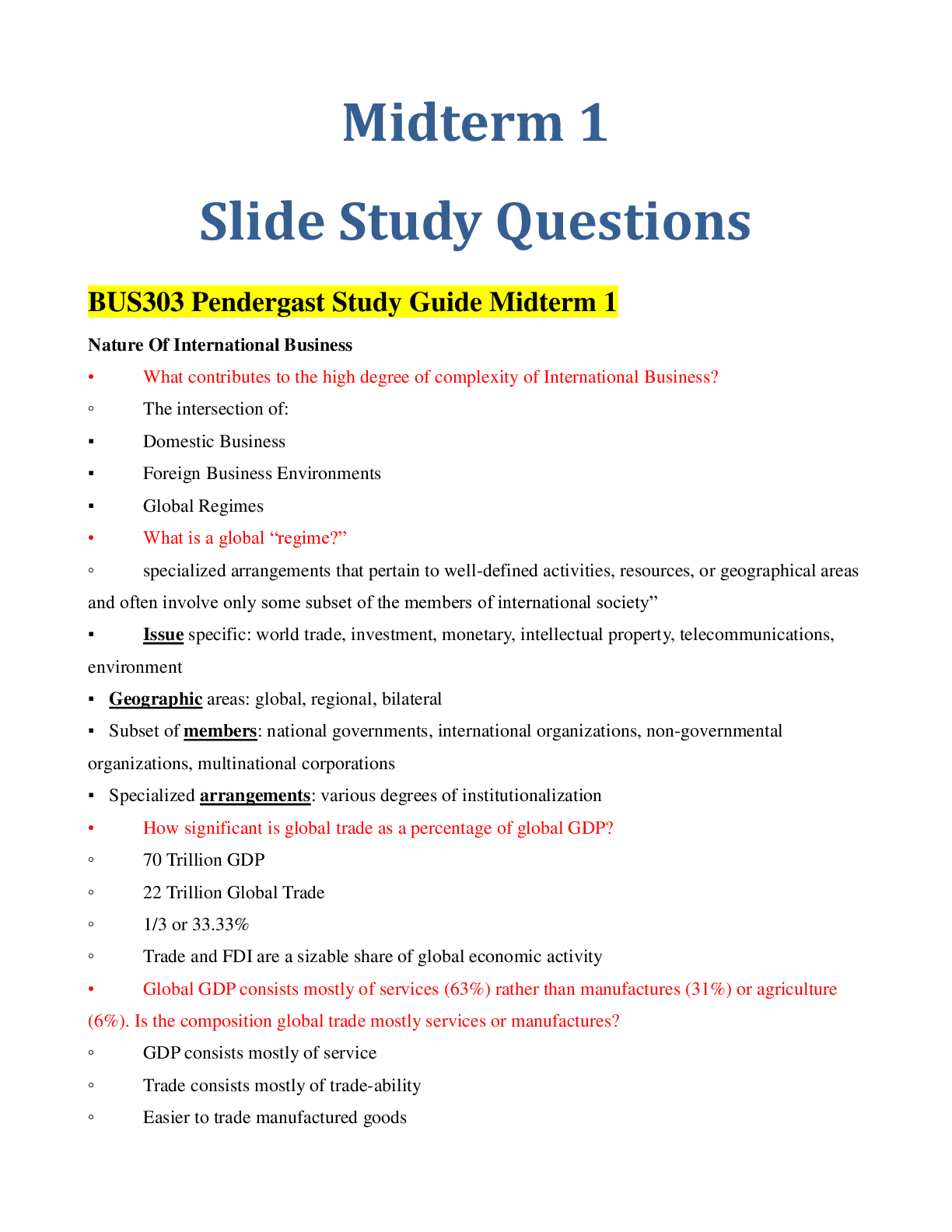
Reviews( 0 )
Document information
Connected school, study & course
About the document
Uploaded On
Jan 12, 2021
Number of pages
52
Written in
Additional information
This document has been written for:
Uploaded
Jan 12, 2021
Downloads
0
Views
63

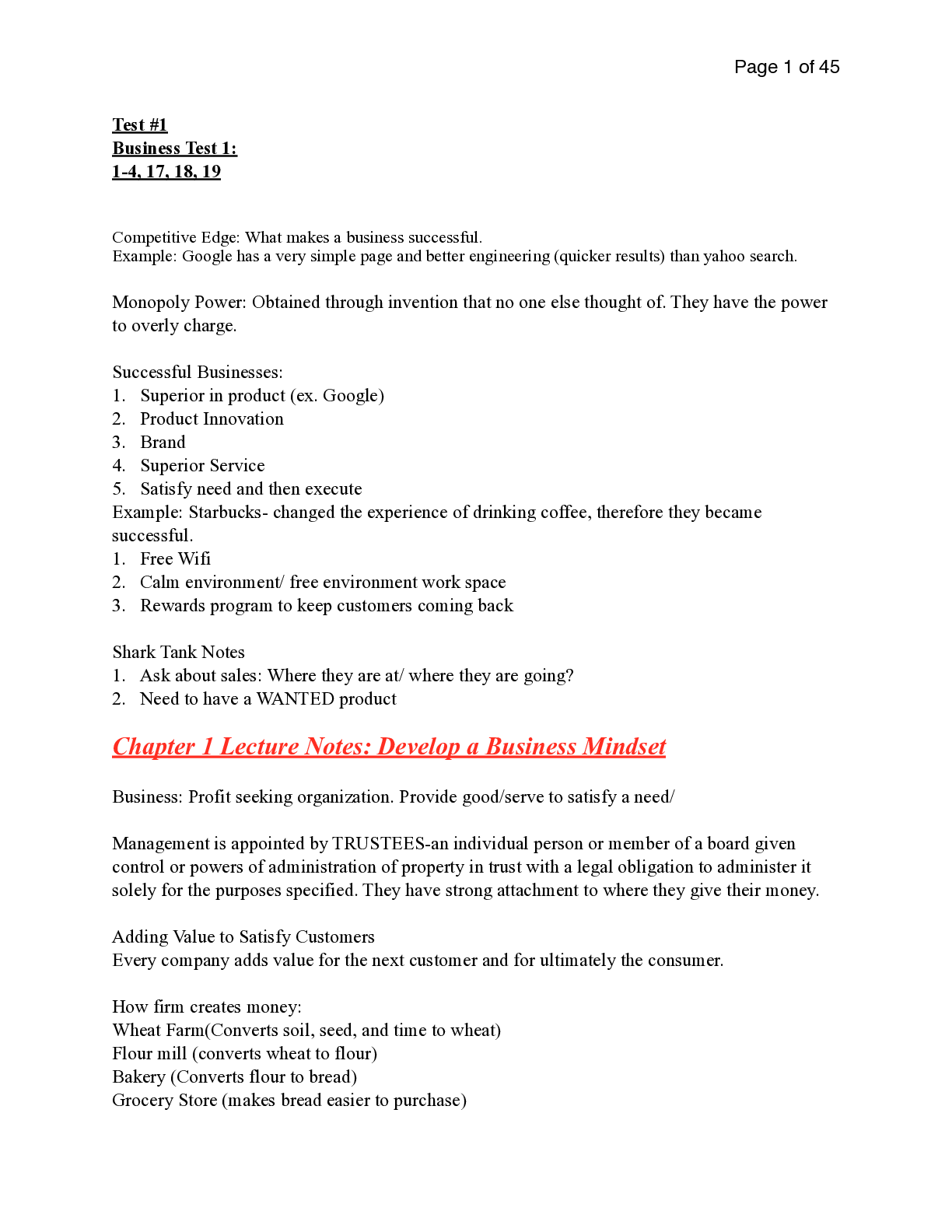
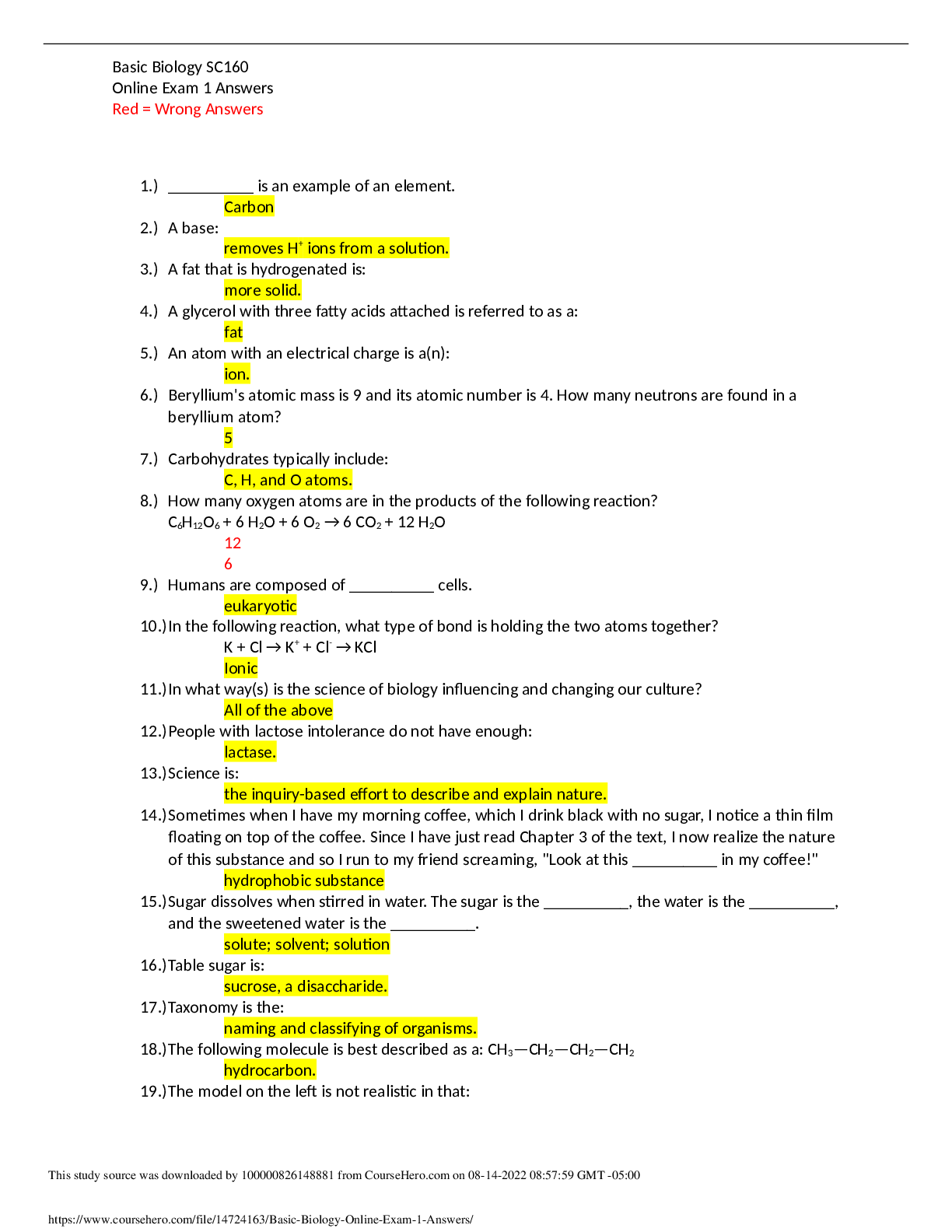
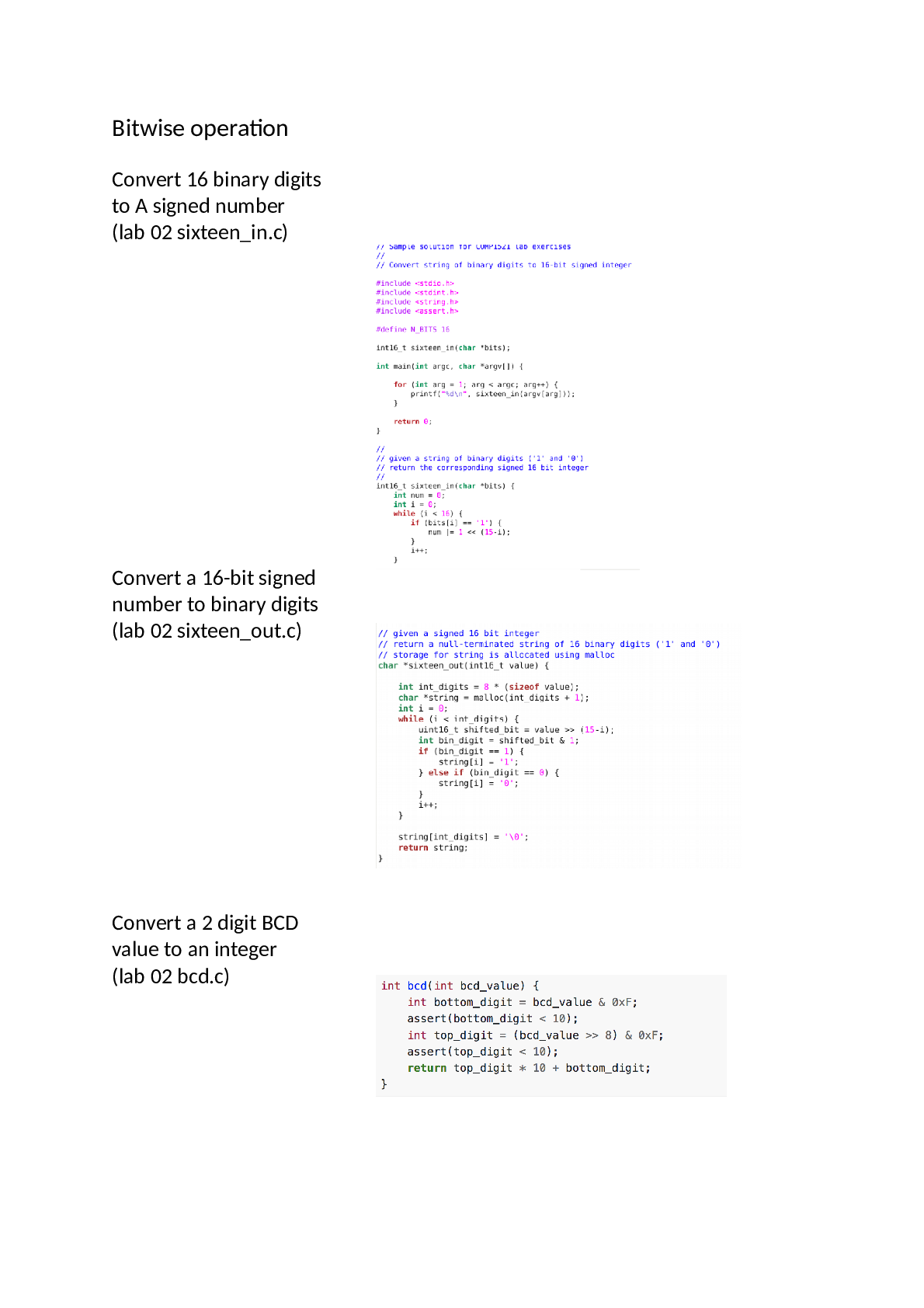
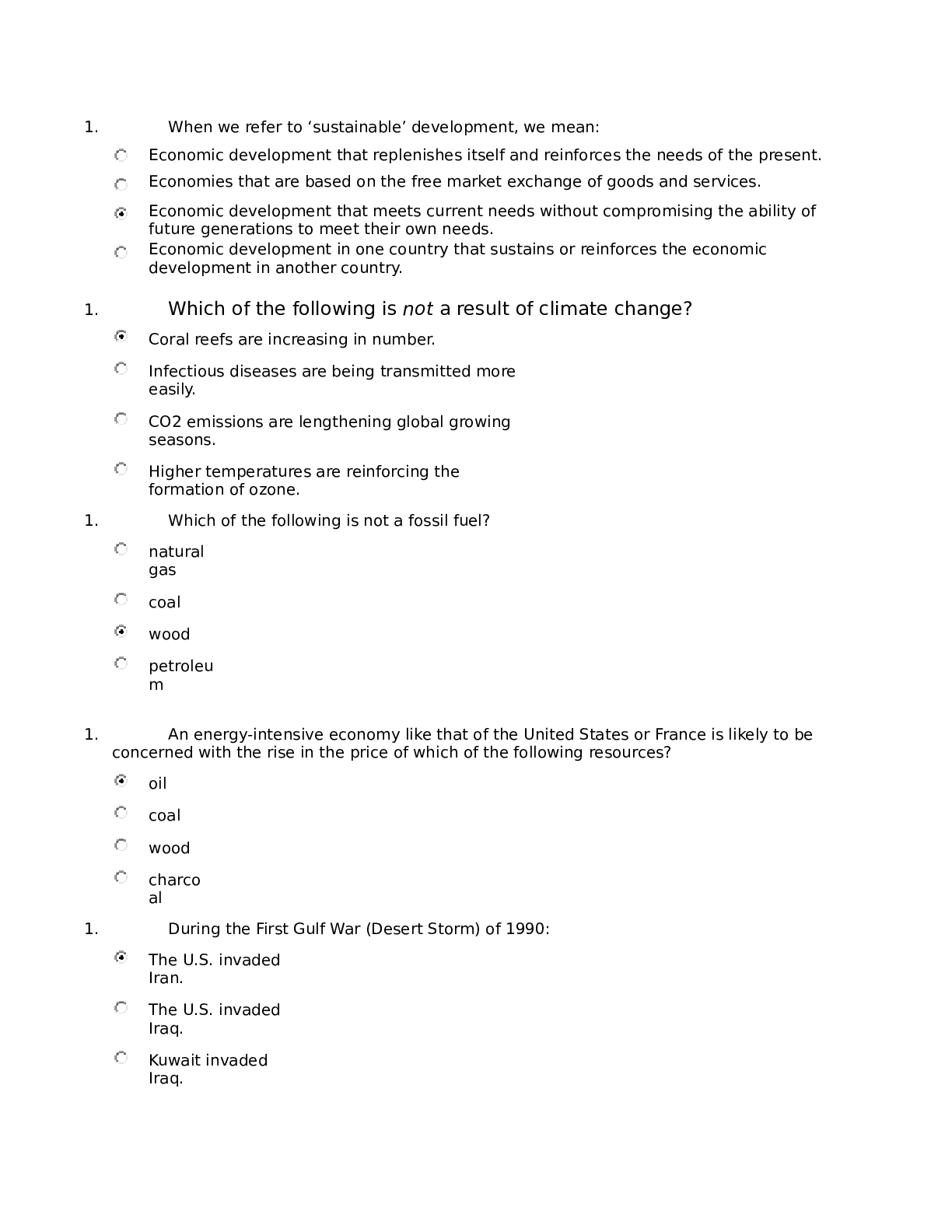
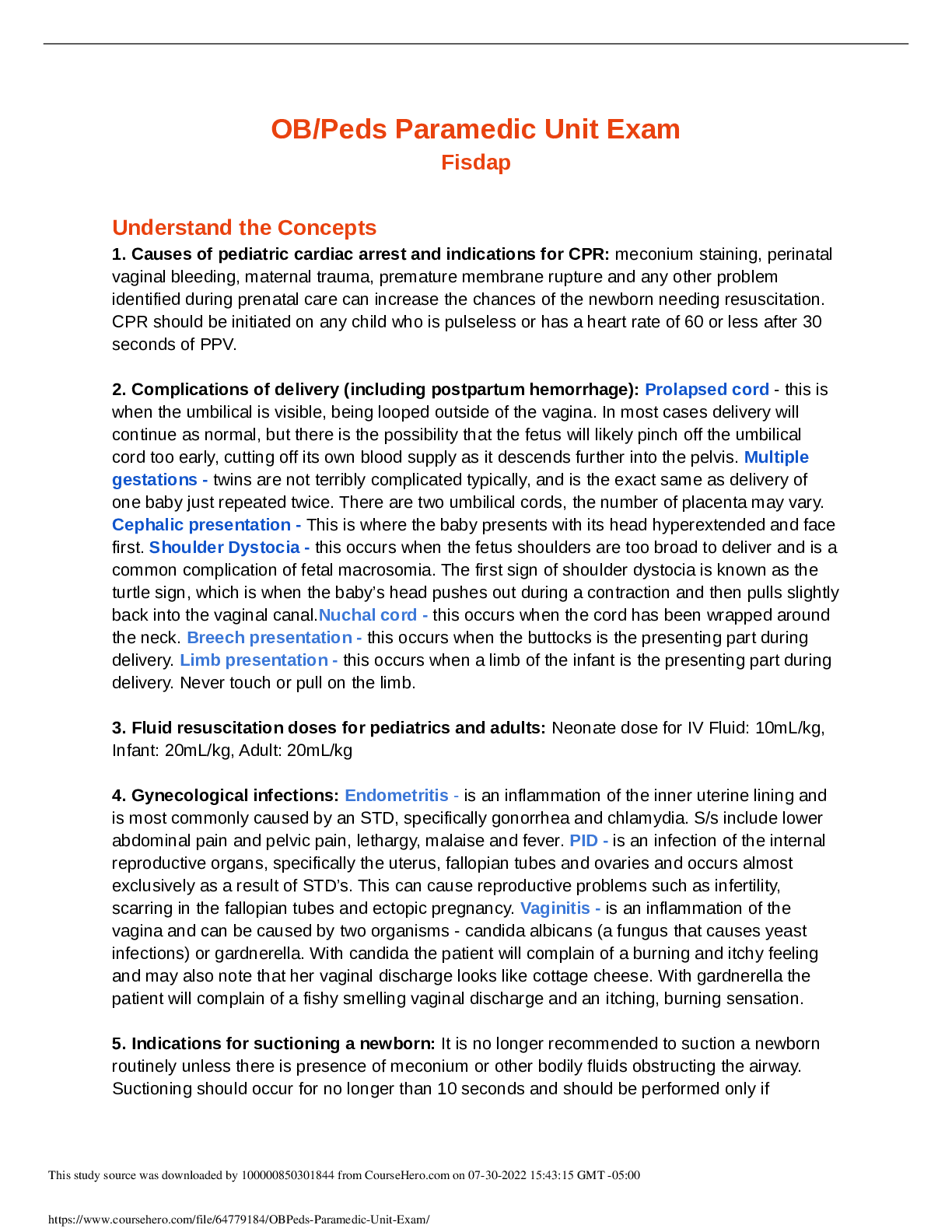
 (1).png)
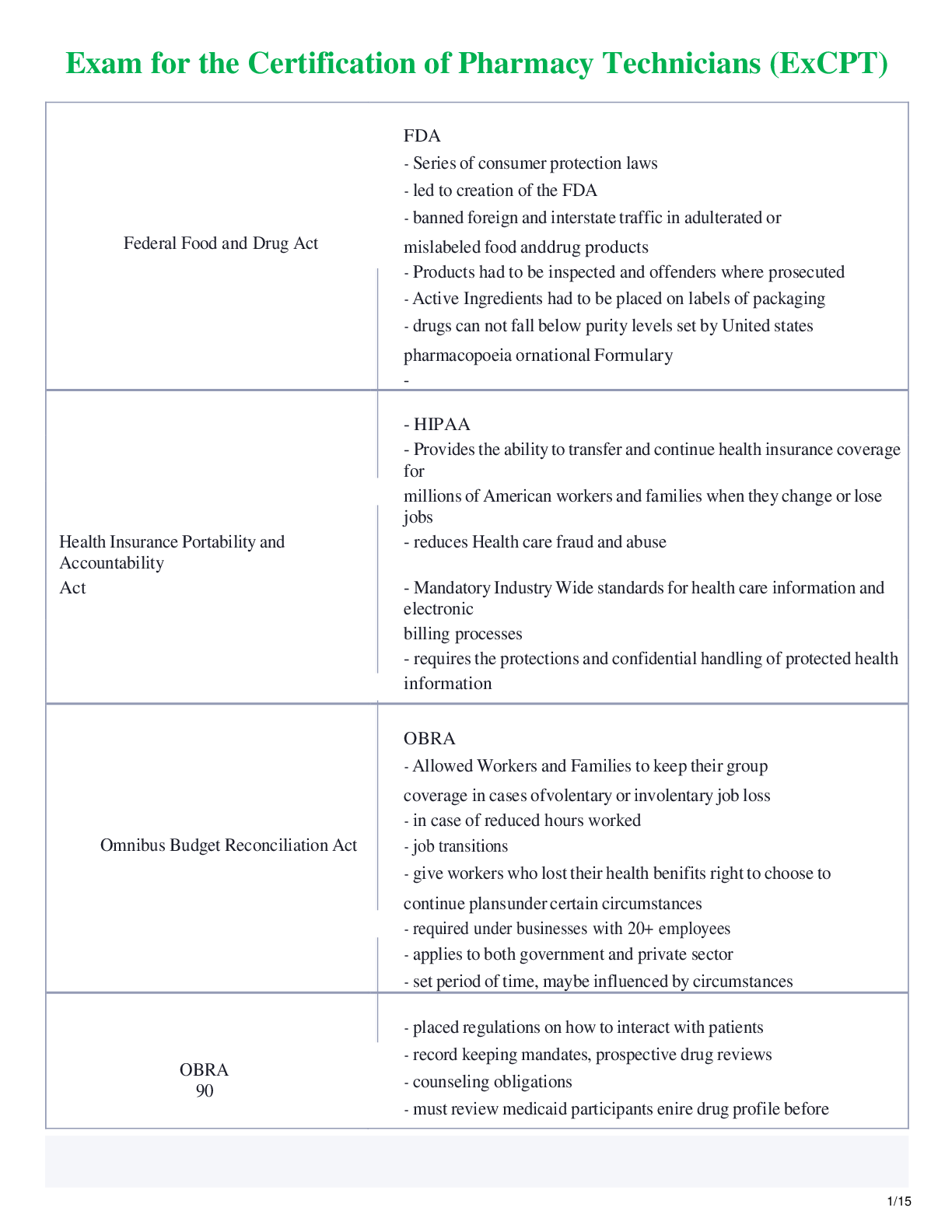
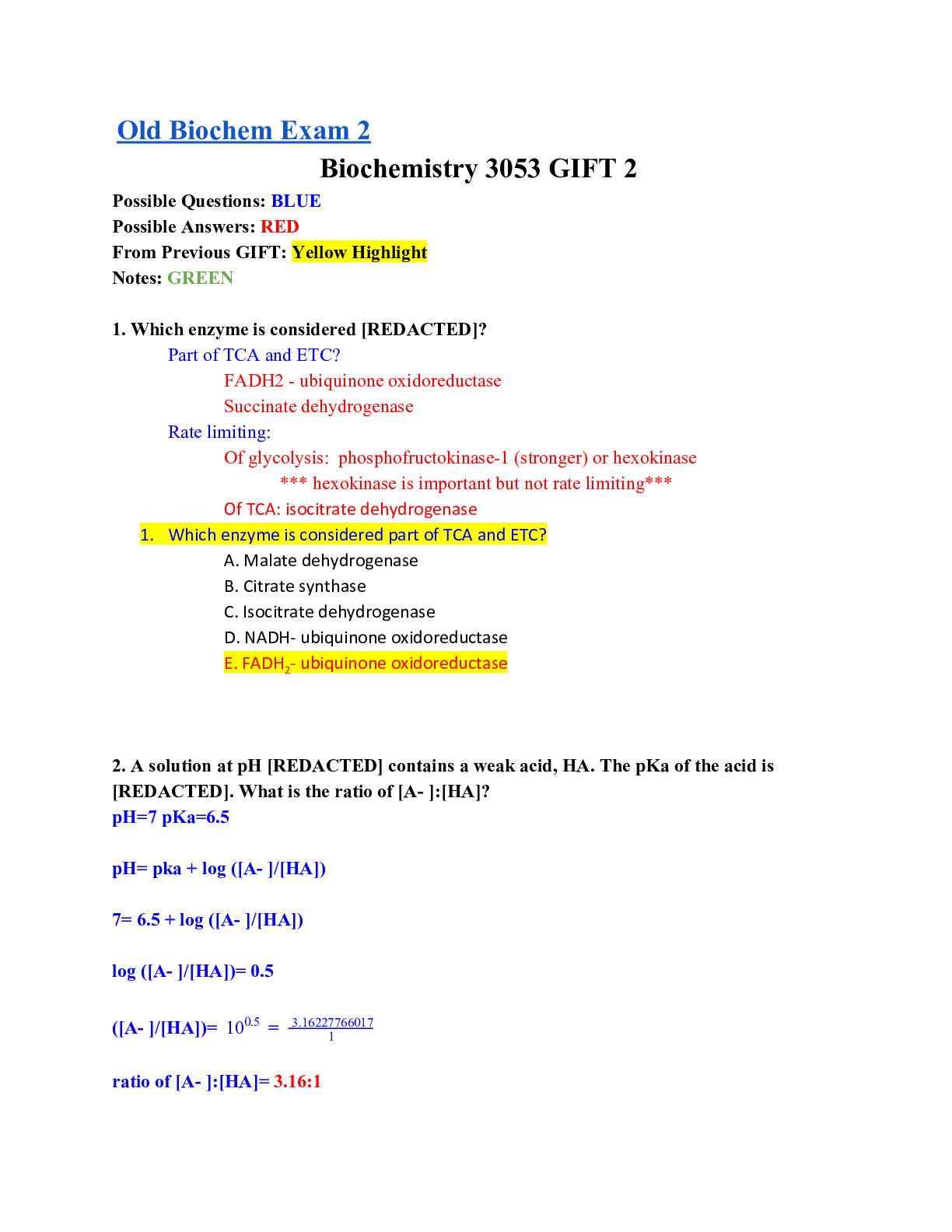

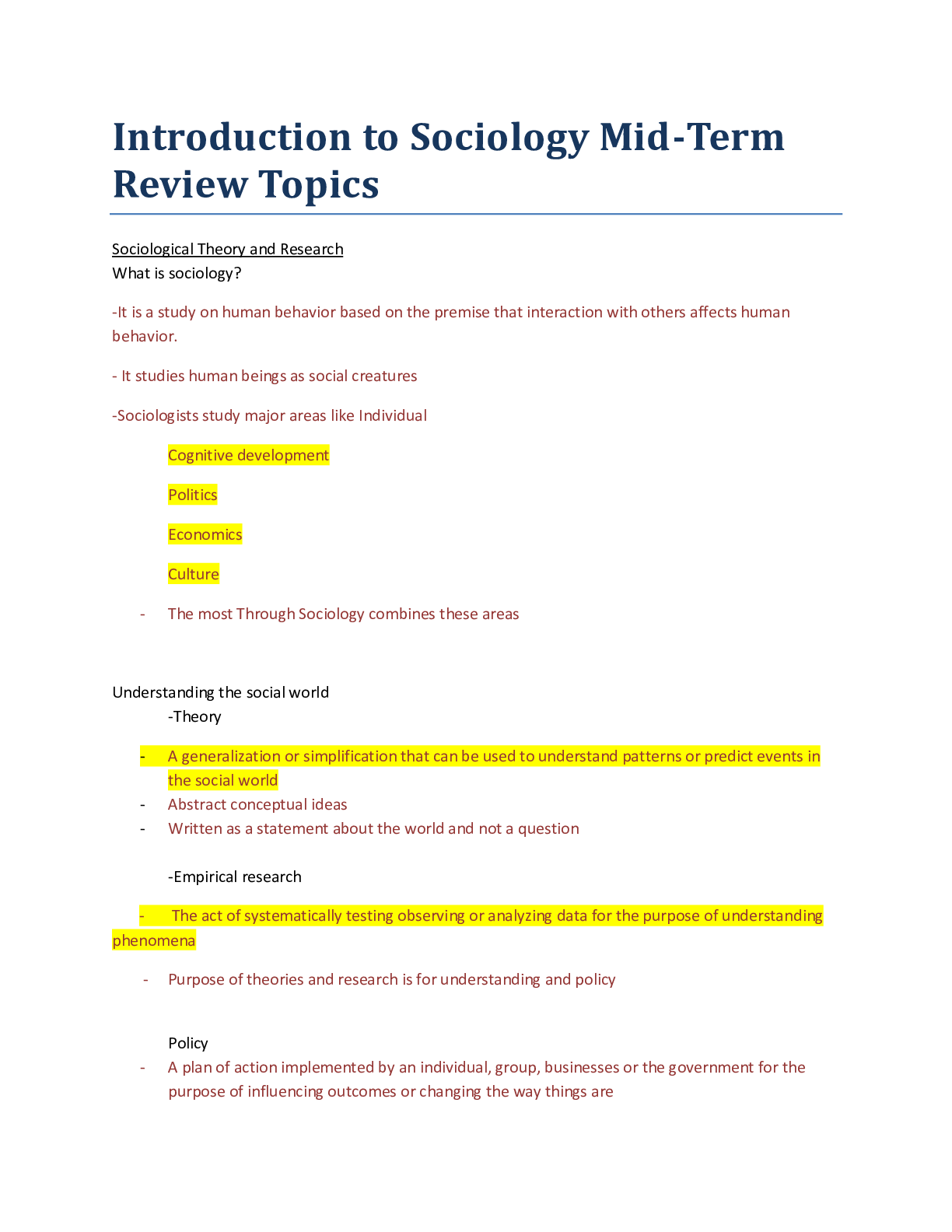
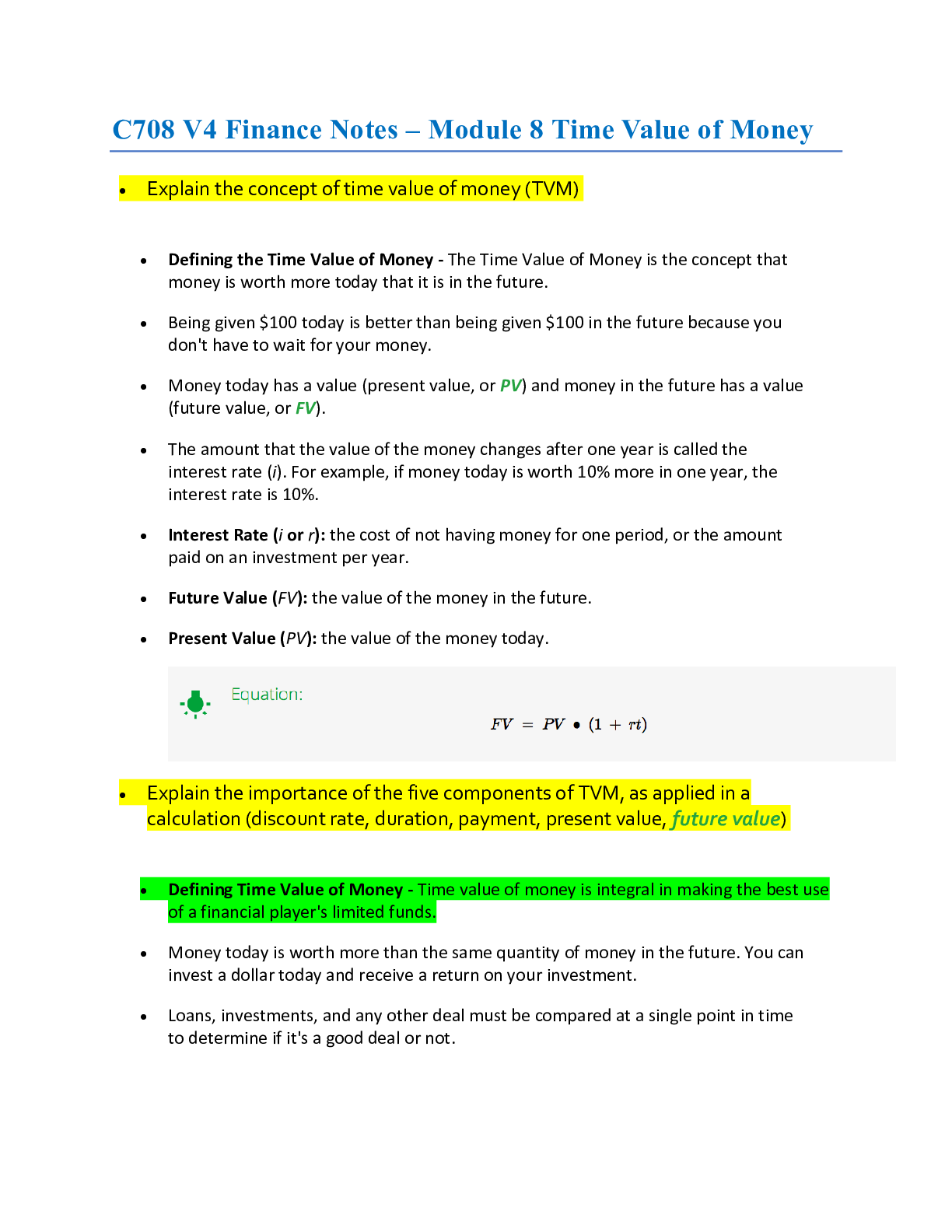
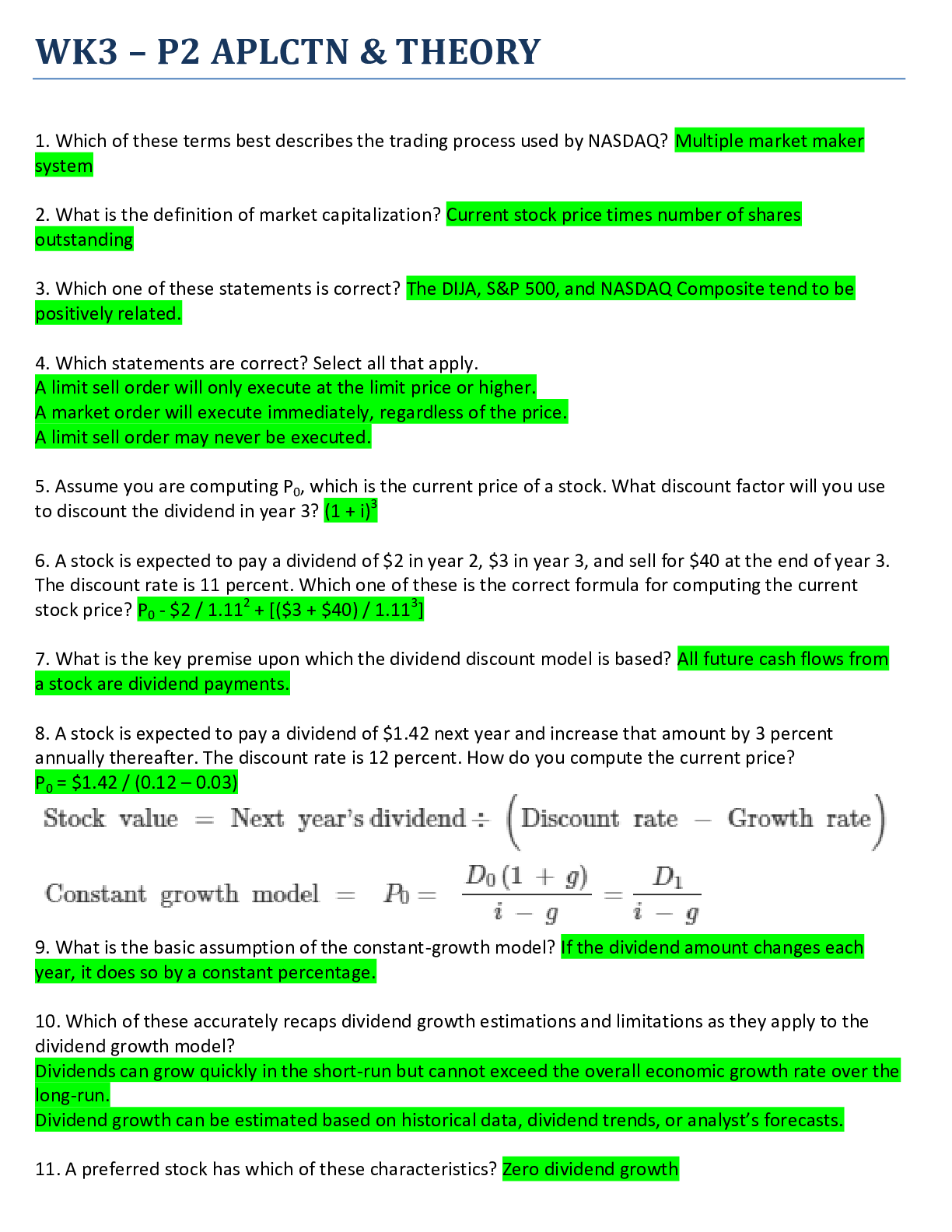
.png)
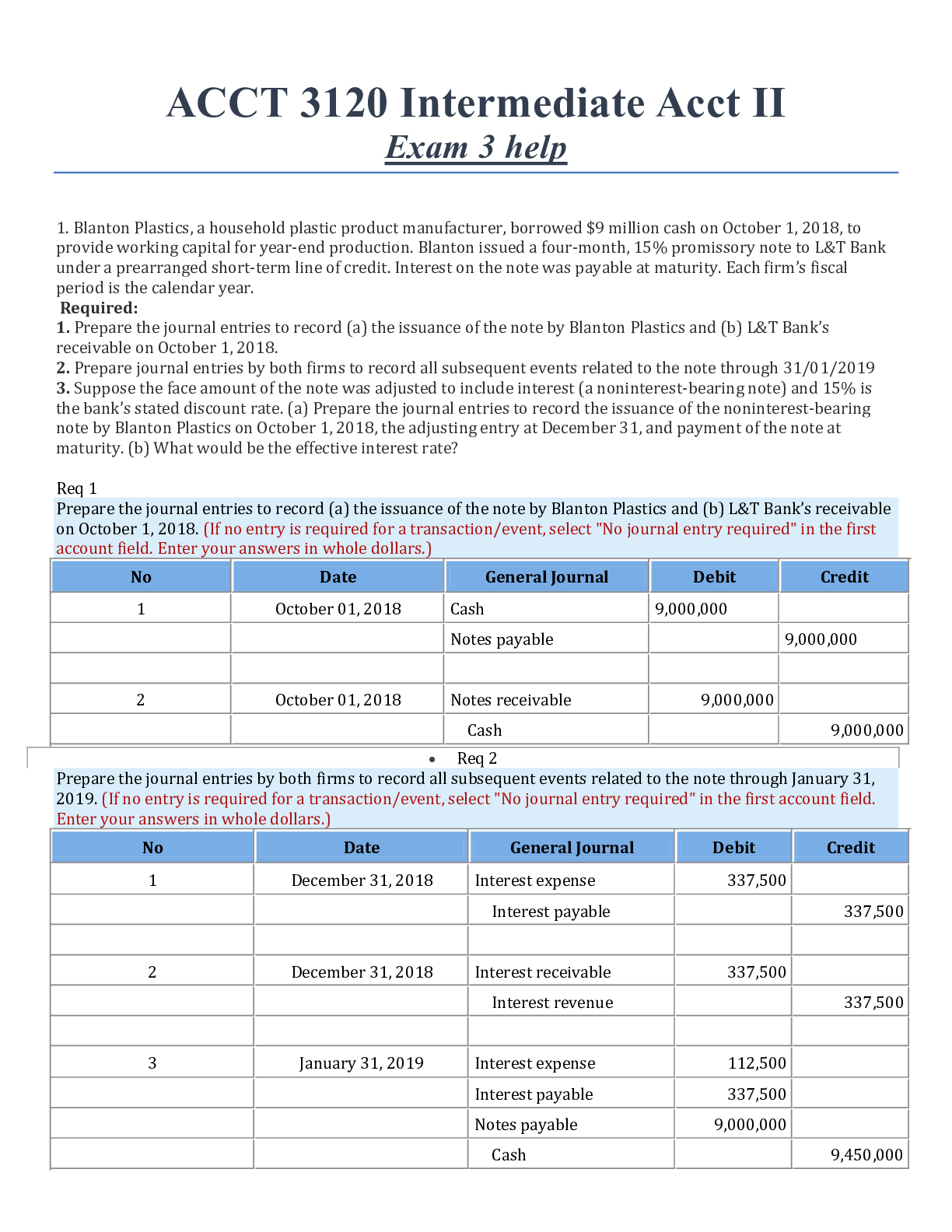
.png)
